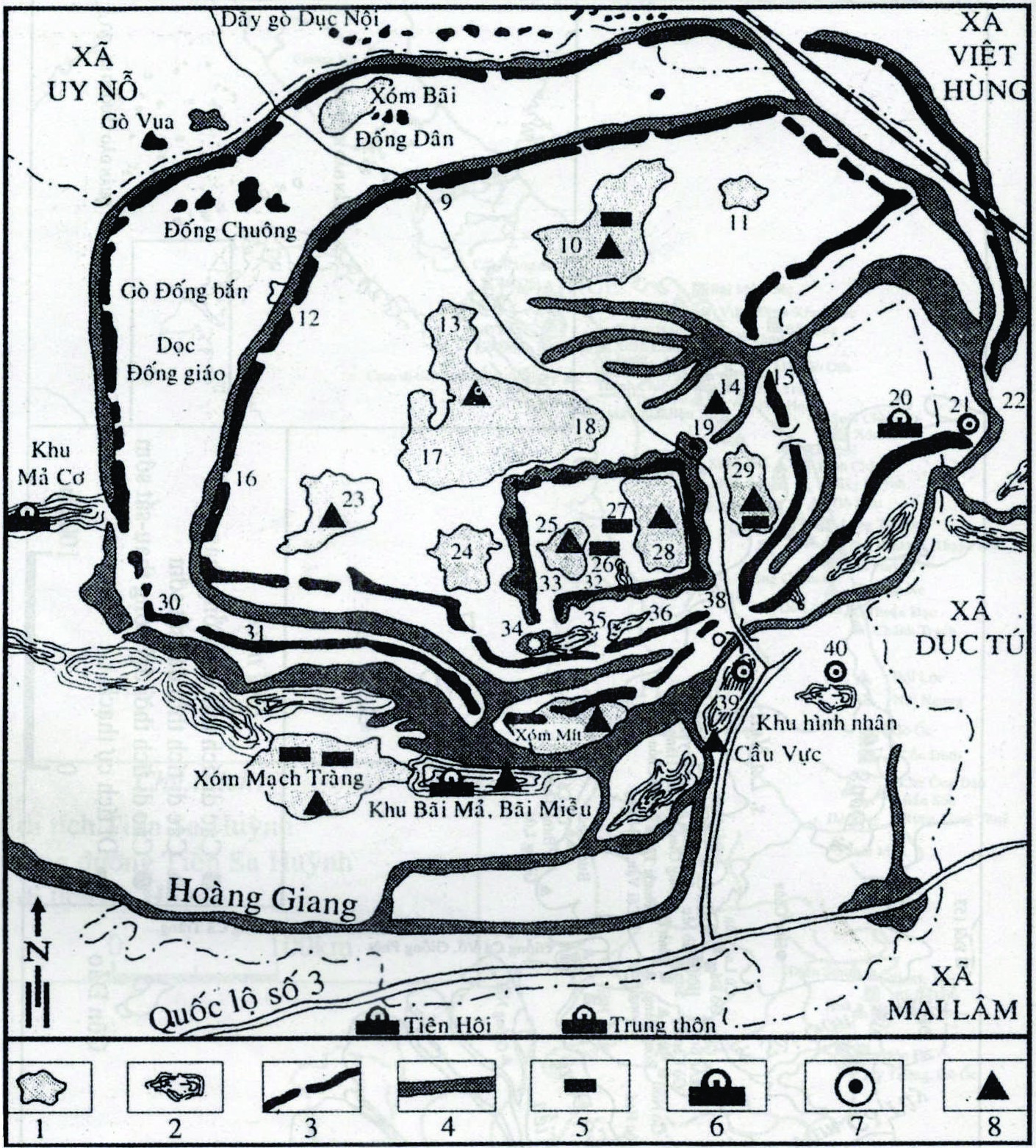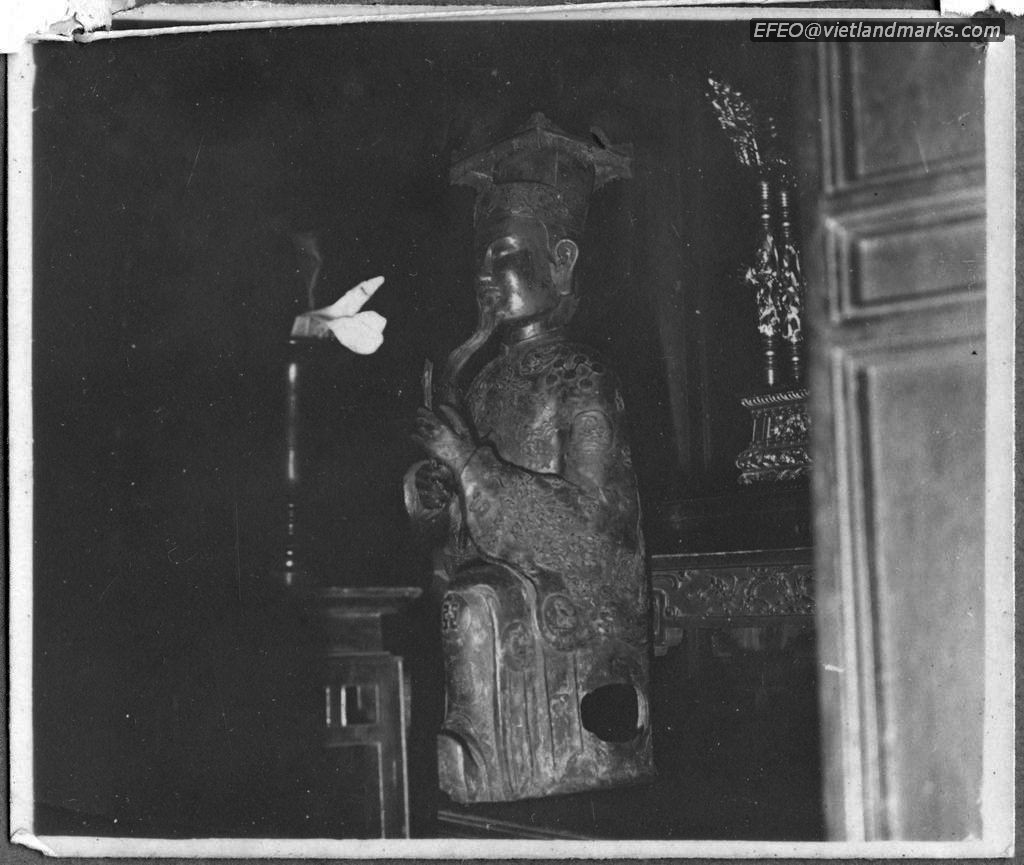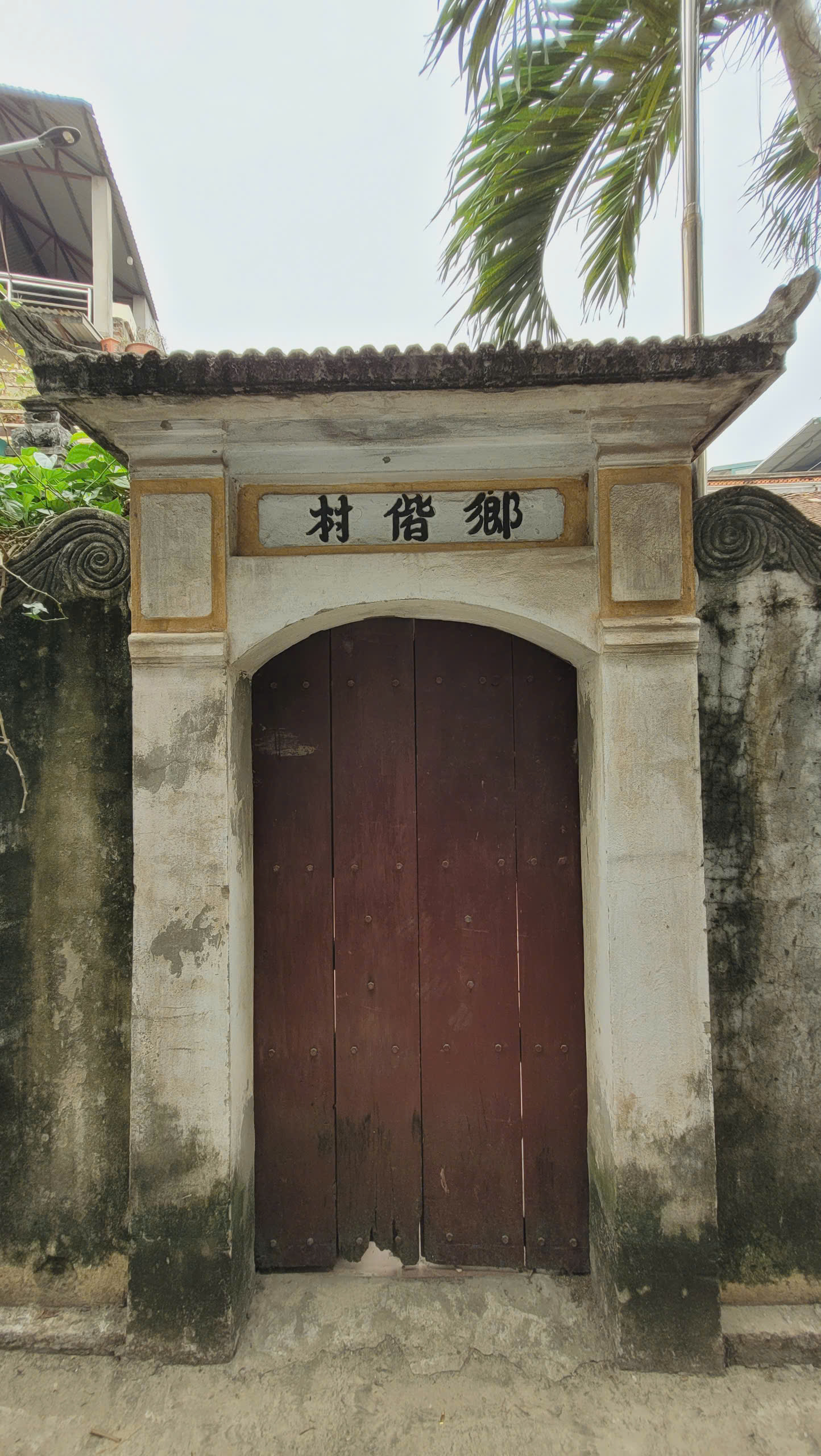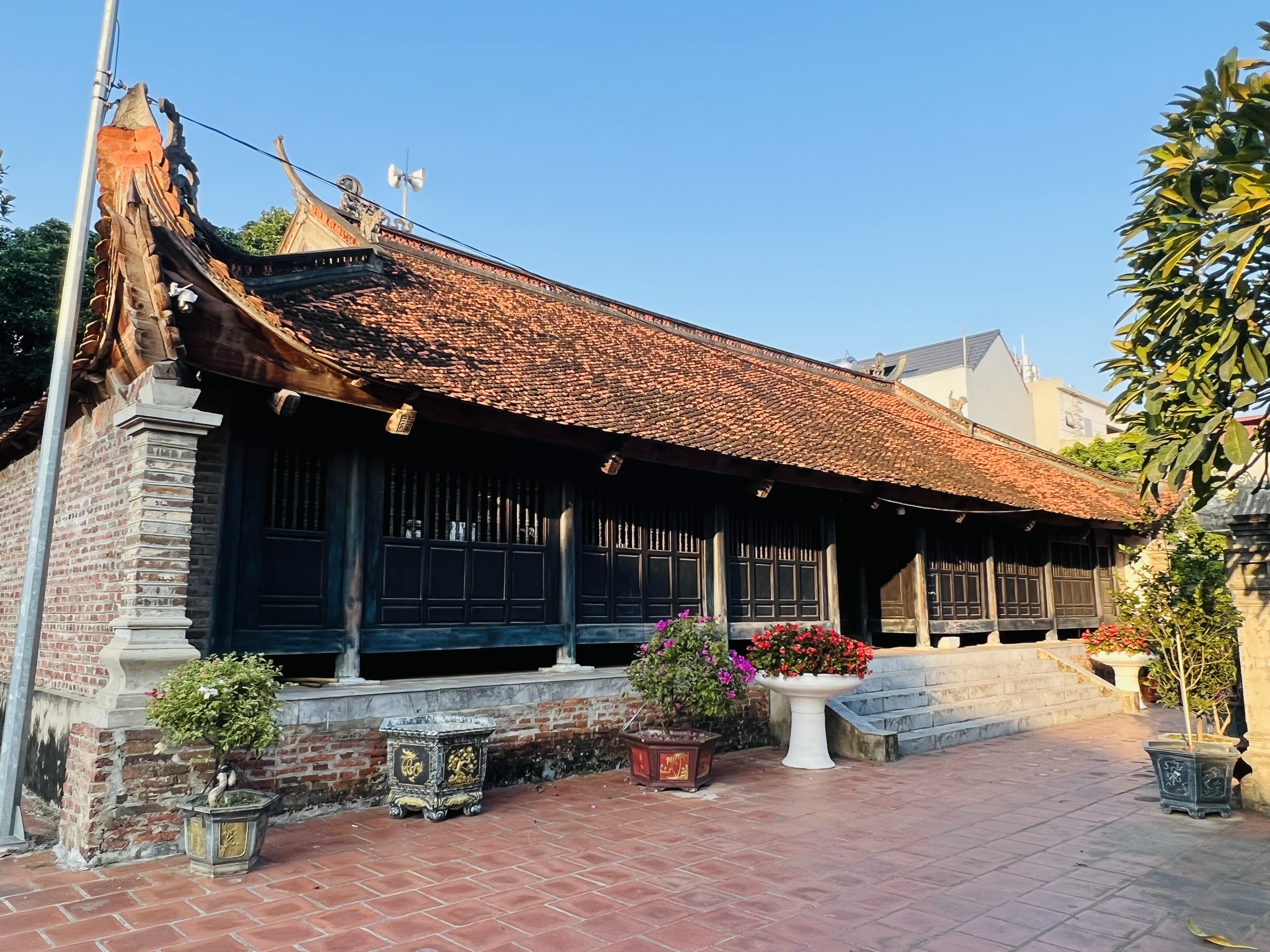Cau Ca village around the 19th century belonged to Uy No Thuong commune, Xuan Canh commune, Dong Ngan district, Tu Son prefecture, Bac Ninh. In the 29th year of Tu Duc (1876), Co Loa commune and two communes, Tuan Le and Xuan Canh, were separated from Dong Ngan district, along with some communes of Kim Anh and Yen Phong districts to form Dong Anh district, Tu Son prefecture, Bac Ninh province. Cau Ca village still belongs to this administrative area. On June 17, 1949, the Administrative Resistance Committee of Inter-zone I issued Decision 361 PC/1 to merge Thuc Vuong commune with Dat Tam commune, Cau Ca and Dai Bi villages of Uy Son commune into Hong Lac commune. In 1949, Cau Ca village belonged to Doc Lap commune, which was renamed by Hong Lac commune. After the land reform (1954), Doc Lap commune was renamed Quyet Tam commune, including the villages: Co Loa, Cau Ca, Dai Bi, Mach Trang, San Da, Thu Cuu. In 1965, Doc Lap commune was renamed Co Loa commune. From then until now, Cau Ca village is one of 15 villages and hamlets in Co Loa commune, Dong Anh district, Hanoi city.
The entire Cau Ca village is located outside all three walls of the Co Loa relic site to the West and Northwest, with administrative boundaries:
- West: adjacent to Hoang Giang river.
- East: bordering the fields outside the citadel.
- Southeast: bordering Mach Trang village.
- Northeast: bordering San village (ie San Gia).
The village was formerly called Cau Ky village. Legend has it that in the past, this place was one of the eight towns protecting Co Loa citadel from the outside, guarded by General Ly Tam Vien. According to folklore, the reason the village is called Cau Ca is because it is located right next to the Hoang Giang River, and in the past there was a bridge across the river called Cau Thang Nam (Ngu Nguyet Kieu). There is also another explanation that this is where King Thuc An Duong Vuong often took a boat to bathe or that the king often took a boat here to return to his wife's hometown. Through a survey of Cau Ca village, we found a number of ancient place names: Xu Gate, Lang Gate, Do Ao Do (also known as Bai Dai), Dau Chua, Doi Loc, Dong Chai, Lo Voi Quan pond, To Chi, Ngu Nguyet Kieu, Ang Garden, Lac Garden, which are explained to be associated with the legend of the ancient land of Au Lac. According to the genealogies, the two families that came to establish the village the earliest were the Dong family and the Nguyen family (the Dong family has been in Cau Ca for 13 generations - counting from Mr. Dong Dao Phuc and the Nguyen family has been in Cau Ca for 12 generations - counting from Mr. Nguyen Van Van - the head of the Nguyen family). These are the two families with the largest number of people in the village today, in addition to the Do family, the Vu family and the Tran family.
The Dong family genealogy book states that the Dong family originated from Thanh Hoa. Even more ancient, the Dong family was originally Chinese. Their ancestor held the position of Sima, but because he was being hunted by the imperial court, they added a downward stroke next to the word "Tu", becoming the word "Dong". Notably, this genealogy records 16 commandments to teach children and grandchildren in the family, called Gia quy thap luc ngon.
The Nguyen family genealogy (Nguyen thi the pha) was written in the 20th year of Tu Duc (1867), the author was Mr. Nguyen Tat To, with the title of Don Tuc Cong, the courtesy name Ta Khanh, the name To, passed the Bachelor's exam in Mau Thin year (1866), became Dien Ban District Chief in 1884, and is currently kept at the house of Mr. Nguyen Van Van (head of the Nguyen family). According to this genealogy, the Nguyen family in the village had many branches, each branch had its own genealogy book clearly recording the lineage of the family.
The genealogy of the first branch of the Nguyen family is currently maintained by Mr. Nguyen Van Vien. In addition to the general part about the biographies of the four ancestors (from the first to the fourth generation), this genealogy takes Mr. Nguyen Tat To (the fifth generation) as the head of the branch. Basically, this genealogy records stories about the life, background, and career of Mr. Nguyen Tat To. In addition, there are: La Ap Tu Duong Bi Ky (recording the days when Mr. To taught at La Ap) and Ban Nien Pha recording the entire life of Mr. Nguyen Tat To.
Regarding the organization in the old village, we see that the village was organized and operated according to the Giap unit. The old Cau Ca village had four Giaps: East, West, South, and North. When male members of the village reached the age of 18, they were allowed to join the Giap after paying a certain amount of money to that Giap. If they did not have money, they could bring tea and water and do some service work in the village. After a while, they would officially become members of the Giap. When joining the Giap organization, members had to follow the regulations and perform the Giap's obligations, mainly in funerals and weddings. All Giap activities mainly took place at the communal house, each Giap met separately, sat in order, and their positions were engraved on the main pillars of the communal house. Usually, two Giaps sat on the same platform in the communal house. People aged 70 and over sat on the platform, while those under 70 sat on the ground. On big festival days of Co Loa village, the four hamlets of Cau Ca village meet to discuss the preparation work as well as the amount of offerings to contribute.
In the village today, there are also typical cultural, religious and belief architectural works such as Cau Ca communal house worshiping An Duong Vuong, My Chau temple and Cau Ca pagoda. Cau Ca communal house is currently located in the middle of the village, on a not-so-large plot of land. The communal house faces south, where the Hoang Giang River flows through. Previously, the communal house was located outside the rice fields (at the beginning of the village, in an area called Ao Quan). Around 1920, the communal house was moved to its current location. Because the communal house is located in the middle of the village, when building it, people did not make a knife head to avoid the situation of "the corner of the pond and the knife of the communal house", because it is believed that if the knife head points to a house, that house will be unlucky.
The shrine of Princess My Chau is located on the left side of the village communal house. The shrine is not very large, only a few square meters, built of bricks and has no door to open or close. Inside there is a throne and a tablet, outside the door there is a pair of parallel sentences. My Chau shrine has three royal decrees, currently kept together in the communal house.
Cau Ca Pagoda (Uy Nhu Tu) is currently located next to the village kindergarten. The pagoda was built with simple architecture and decorative patterns. The year of construction of the pagoda is recorded on the upper beam as the 6th year of Khai Dinh (1921). The pagoda consists of two buildings: the Buddha worship area and the Mother worship area.
Cau Ca is a large village in the whole Co Loa commune, one of the "Eight communes of Loa citadel" in the past.
MANAGEMENT DEPARTMENT OF CỔ LOA VESTIGE SITE








